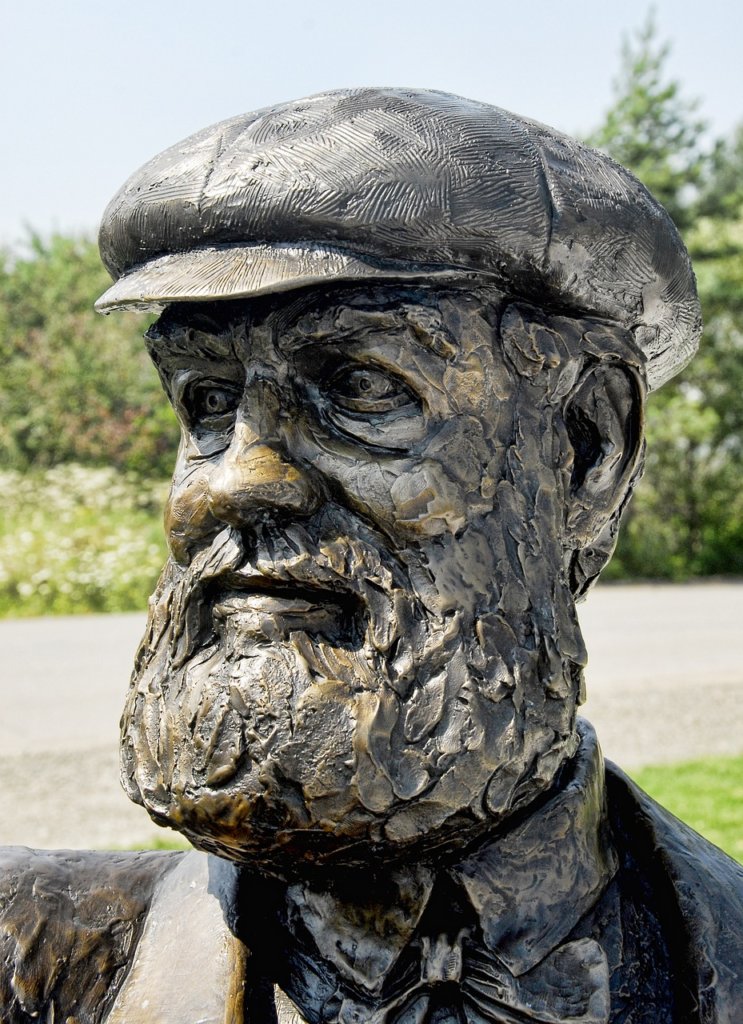A History of Deaf and Hard of Hearing Education (And What That Means for Advocacy)

It’s the beginning of another academic year, and my students in the Teacher of the Deaf and Hard of Hearing Education program are ready to start their first course, Deaf Studies: An Introduction. They are all certified teachers with varying years of teaching experience and have become passionate about being qualified to teach deaf and hard-of-hearing students. Some have been tapped to teach deaf and hard-of-hearing students as non-qualified teachers, some have encountered a student in their regular classroom, and others come with an interest but no direct experience. One of the first things we emphasize is the paradigmatic shift in the field in the last 30 years. While the students may initially feel that we are intent on boring them with stories of the olden days, we’ve come to realize how little the average person knows about the vast changes in the field and the impact of these changes on everything. The debate around the statement “what deaf and hard of hearing children need is…” has been raging for centuries as what used to be termed “oralism” and “manualism.” A friend asked me not so long ago, “are people still arguing about that?” Yes indeed, and in my experience, in ways that are more heated and less productive than 30 years ago.
These are important issues, so we like to begin our introductory course with some historical context. We team-teach a segment on the history of deaf education, starting with Aristotle and focusing strongly on sign language’s role (or lack thereof). The past few years, though, I have spent time on what I like to call “the history of hearing,” an overview of how long we as professionals have been able to provide meaningful access to spoken language through amplification. I sometimes forget myself that even access to a basic hearing test for a child suspected to be deaf was not really available outside large cities until after World War II. Body-worn hearing aids weren’t readily available until the 1960s or so, cochlear implants for children not until the early 1980s and universal newborn hearing screening in Canada not until 20 years ago. In 1900, Alexander Graham Bell stated (italics are mine) that “Speech is usually acquired through hearing and imitation, but it may also be acquired (independently of hearing) through special instruction.” I am going to respectfully state that he was wrong about that. Maybe children with mild, conductive, or high-frequency losses could do it to a certain extent, but believing that a child with severe to profound hearing loss could acquire spoken language without meaningful access to sound was expecting that child to do the impossible.
The implications become clearer when I ask the students to consider a hypothetical family with hypothetical backgrounds, all with congenital profound hearing loss (through some sort of dominant gene, let’s say). We have Emma, the “grandmother,” born in 1940 and now 83 years old, and Cynthia, the “mother,” born in 1962 and now 61 (my age if you’re keeping track). Susan is Cynthia’s daughter, born in 1996 and now 27 years old, and Sarah is Susan’s daughter, born in 2021 and now 2 years of age. The students and I consider the educational and societal contexts for these 4 individuals sitting around the dinner table at Thanksgiving. Emma’s deafness would have been very late identified, there were no hearing aids for her when she was a child, and her education was whatever well-meaning teachers in her small town could provide. Her family developed some home sign language, and she picked up Signed English and ASL as an adult. Cynthia’s deafness was identified a little earlier, and she had access to hearing aids, a body aid and cords worn on her chest (but usually with the microphones covered by a shirt or pocket so it was less noticeable). Still, her access to speech was not that meaningful. She attended an oral school for the deaf (as the schools of the time generally did not use sign language until the mid-1970s) as a residential student far from home because she lived too far away for the bus. She picked up sign language from her mom and fellow students (there was always unacknowledged sign language at the schools for the deaf), and later became a member of the Deaf community. She didn’t continue to use hearing aids as an adult and was never a cochlear implant candidate.
On the other hand, her daughter Susan still had a relatively late diagnosis of deafness pre-newborn screening (age of 2 ½ or 3) but had unilateral cochlear implantation at age 4. She’d be considered “late” implanted by today’s standards but still had good spoken language and literacy outcomes. She signs because her mother and grandmother do, but attended a regular school in a congregated class for deaf students. Her 2-year-old daughter Sarah, though, has had bilateral cochlear implants performed simultaneously at 6 months and is indistinguishable from a hearing child in her speech. The students and I talk about how each individual has vastly different educational and life experiences and how this shapes their perception of “what deaf and hard of hearing children need.”
Emma and Cynthia, along with members of the Deaf community, may advocate strongly for the use of American Sign Language as the primary mode of communication and education for all children with hearing loss. In contrast to culture in other communities, where one is born into a family that celebrates a particular language, culture, customs and traditions, Deaf culture arose at the schools for the deaf. So Emma and Cynthia may advocate for schools for the deaf, and focus on the importance of Deaf identity. Access to sign language interpreters in the community and workplace would be important for Emma and Cynthia. Congregated classes for deaf students have almost disappeared in Canada, so Susan may advocate for that and more intensive support from teachers of the deaf in the mainstream, which is what she needed. Susan may want accessibility in the form of loops in public spaces (since she loves her telecoils), but Emma and Cynthia have no use for that, and Sarah has Bluetooth in her processors instead. When Sarah goes to school, ensuring someone is in place to provide all of her technology and make sure it’s working will be key. What about issues of identity for Sarah, though? Is that important, or is it a non-issue?
When I began my career, I was confident that I knew the answer to the statement “what deaf and hard of hearing children need is…” The students and I come to realize that it is far more nuanced. At school, teachers of the deaf and educational audiologists encounter students who are similar to all of our family members, Emma, Cynthia, Susan and Sarah. While more and more students “look” like Sarah, many students still require more academic support in the mainstream (like Susan). We also see students who come from other countries having never used amplification or never been to school (like Emma) or students with absent cochlear nerves, for whom amplification will not provide meaningful sound. And they will grow up to be adults with diverse needs and perspectives. Mr. Bell is a polarizing figure in deaf education, but he got some things right. In his words, “Great discoveries and improvements invariably involve the cooperation of many minds.” We need to come together to finish that sentence – “what deaf and hard of hearing children need is… what each of them themselves needs,” and we need to advocate for all of them.



